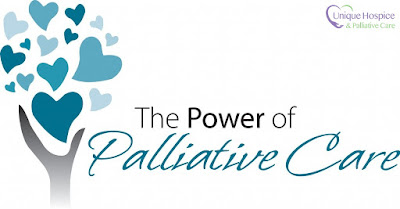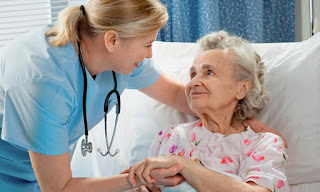Understanding The End of Life Care at Home Symptoms
It is not possible to predict the exact moment of death. However, according to physicians involved in end of life care; there are certain symptoms generally encountered by people nearing death. These are termed as end of life symptoms. We now list down some of the common end of life care at home symptoms:
Loss of appetite
The person approaching their end of life begins to resist or refuse meals and liquids. Such patients may even refuse to eat their favorite foods.
Excessive fatigue and sleep
One of the most common end of life care symptoms is that the person may begin to sleep through major hours of the day and night. This is because of the slow metabolism and also the lack of food and water intake. Such a person may also face difficulty in waking up and feels tired all the time.
Increased physical weakness
As a consequence of eating less, there is an increased amount of physical weakness for even simple activities such as lifting one's head or shifting in bed.
Mental confusion or disorientation
A person going through the end of life symptoms is extremely weak in health. As a consequence, the body and its organs start to fail, including the brain. A dying person is unaware of who they are and who is present with them in the room. They may also speak very little and not respond well to any questions directed towards them. They may say things that don't make much sense and can be confused about time. Such a state is termed as disorientation.
Labored breathing
A dying person's breathing becomes raggedy, irregular and labored. There may be periods of heavy breathing followed by a pause of not breathing from any duration in between five seconds to a minute. Several secretions in the lungs create loud inhaling and exhaling sounds that are termed as "death rattle".
Social withdrawal
One of the most common end of life symptoms is social withdrawal in which a dying person loses interest in their surroundings. The person stops responding to questions, and may completely stop talking or even mutter unintelligibly instead of properly communicating with others. However, a dying person may also surprise loved ones by showing an unexpected amount of energy in communicating just a few days before their death. This behavior can last anything between few hours up to a full day.
Changes in urination
There are constant changes taking place in the mind and body of a dying person. As they tend to eat less, it also means that there are drastic changes in their urination. Their blood pressure also drops and contributes for the kidneys to shut down. The color of the concentrated urine is brownish, reddish or tea-colored.
Cold Hands & Feet
Another common end of life symptom is the cold hands and feet of a dying person. This happens because of the withdrawal of blood circulation in the body. Even the color of skin becomes pale with distinctive patterns of purplish, reddish or bluish mottling.
Are your loved one is at last phase of their life? and you are looking for best end of life care at home then unique hospice is the best Hospice and Palliative care in Los Angeles
Loss of appetite
The person approaching their end of life begins to resist or refuse meals and liquids. Such patients may even refuse to eat their favorite foods.
Excessive fatigue and sleep
One of the most common end of life care symptoms is that the person may begin to sleep through major hours of the day and night. This is because of the slow metabolism and also the lack of food and water intake. Such a person may also face difficulty in waking up and feels tired all the time.
Increased physical weakness
As a consequence of eating less, there is an increased amount of physical weakness for even simple activities such as lifting one's head or shifting in bed.
Mental confusion or disorientation
A person going through the end of life symptoms is extremely weak in health. As a consequence, the body and its organs start to fail, including the brain. A dying person is unaware of who they are and who is present with them in the room. They may also speak very little and not respond well to any questions directed towards them. They may say things that don't make much sense and can be confused about time. Such a state is termed as disorientation.
Labored breathing
A dying person's breathing becomes raggedy, irregular and labored. There may be periods of heavy breathing followed by a pause of not breathing from any duration in between five seconds to a minute. Several secretions in the lungs create loud inhaling and exhaling sounds that are termed as "death rattle".
Social withdrawal
One of the most common end of life symptoms is social withdrawal in which a dying person loses interest in their surroundings. The person stops responding to questions, and may completely stop talking or even mutter unintelligibly instead of properly communicating with others. However, a dying person may also surprise loved ones by showing an unexpected amount of energy in communicating just a few days before their death. This behavior can last anything between few hours up to a full day.
Changes in urination
There are constant changes taking place in the mind and body of a dying person. As they tend to eat less, it also means that there are drastic changes in their urination. Their blood pressure also drops and contributes for the kidneys to shut down. The color of the concentrated urine is brownish, reddish or tea-colored.
Cold Hands & Feet
Another common end of life symptom is the cold hands and feet of a dying person. This happens because of the withdrawal of blood circulation in the body. Even the color of skin becomes pale with distinctive patterns of purplish, reddish or bluish mottling.
Are your loved one is at last phase of their life? and you are looking for best end of life care at home then unique hospice is the best Hospice and Palliative care in Los Angeles


Comments
Post a Comment